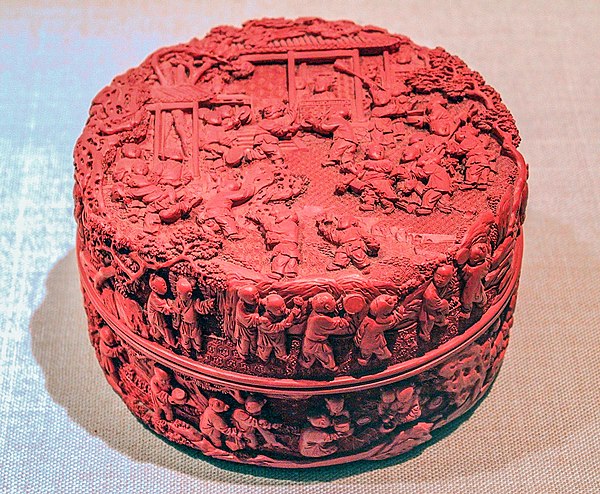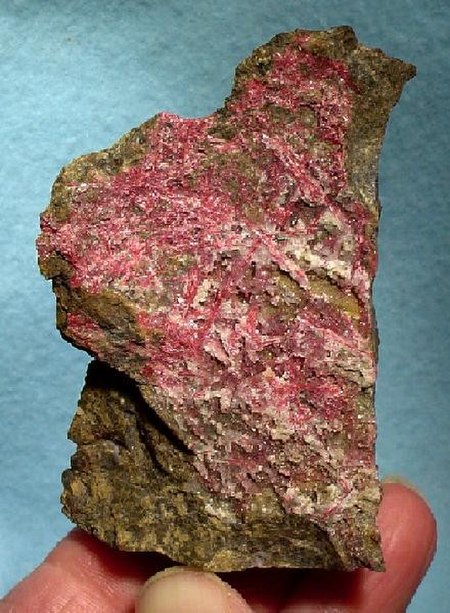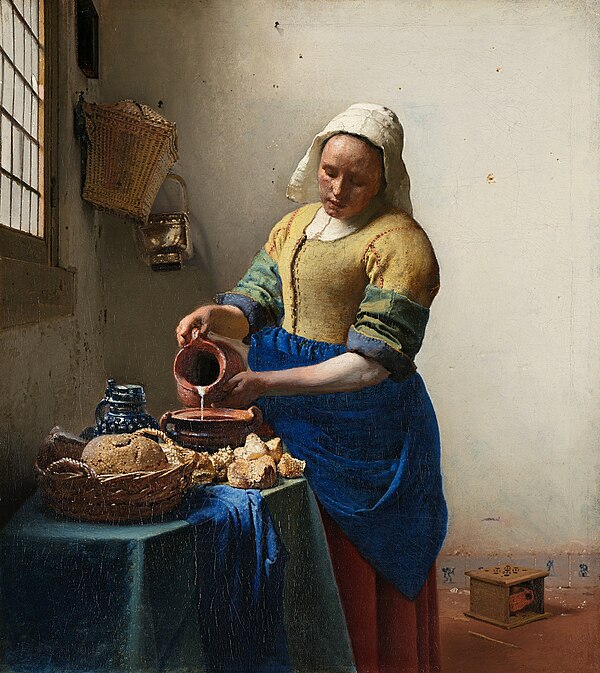Vermilion
Videos
Page
Vermilion is a color family and pigment most often used between antiquity and the 19th century from the powdered mineral cinnabar. It is synonymous with red orange, which often takes a modern form, but is 11% brighter.

The Venetian painter Titian used vermilion for dramatic effect. In the Assumption of the Virgin (1516–18), the vermilion robes draw the eye to the main characters.

A Chinese "cinnabar red" carved lacquer box from the Qing dynasty (1736–1795), National Museum of China, Beijing

Cinnabar crystals from the Almaden Mine in northern California

Cinnabar crystals on dolomite from Tongren Prefecture, Guizhou, China
Pigment
Videos
Page
A pigment is a powder used to add color or change visual appearance. Pigments are completely or nearly insoluble and chemically unreactive in water or another medium; in contrast, dyes are colored substances which are soluble or go into solution at some stage in their use. Dyes are often organic compounds whereas pigments are often inorganic. Pigments of prehistoric and historic value include ochre, charcoal, and lapis lazuli.

Pigments for sale at a market stall in Goa, India

The Milkmaid by Johannes Vermeer (c. 1658). Vermeer was lavish in his choice of expensive pigments, including lead-tin yellow, natural ultramarine, and madder lake, as shown in the vibrant painting.

Titian used the historic pigment vermilion to create the reds in the oil painting of Assunta, completed c. 1518.

Miracle of the Slave by Tintoretto (c. 1548). The son of a master dyer, Tintoretto used Carmine Red Lake pigment, derived from the cochineal insect, to achieve dramatic color effects.